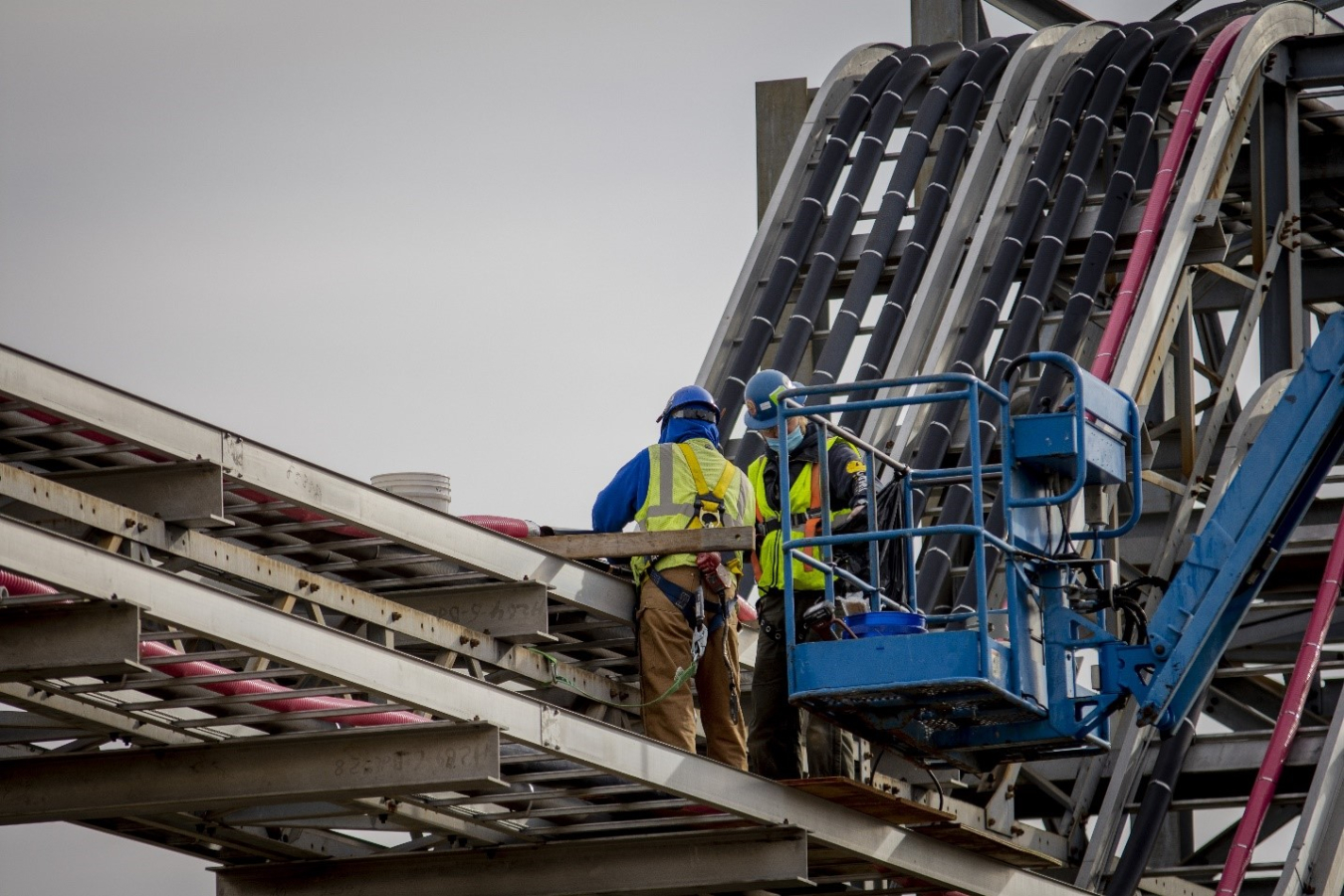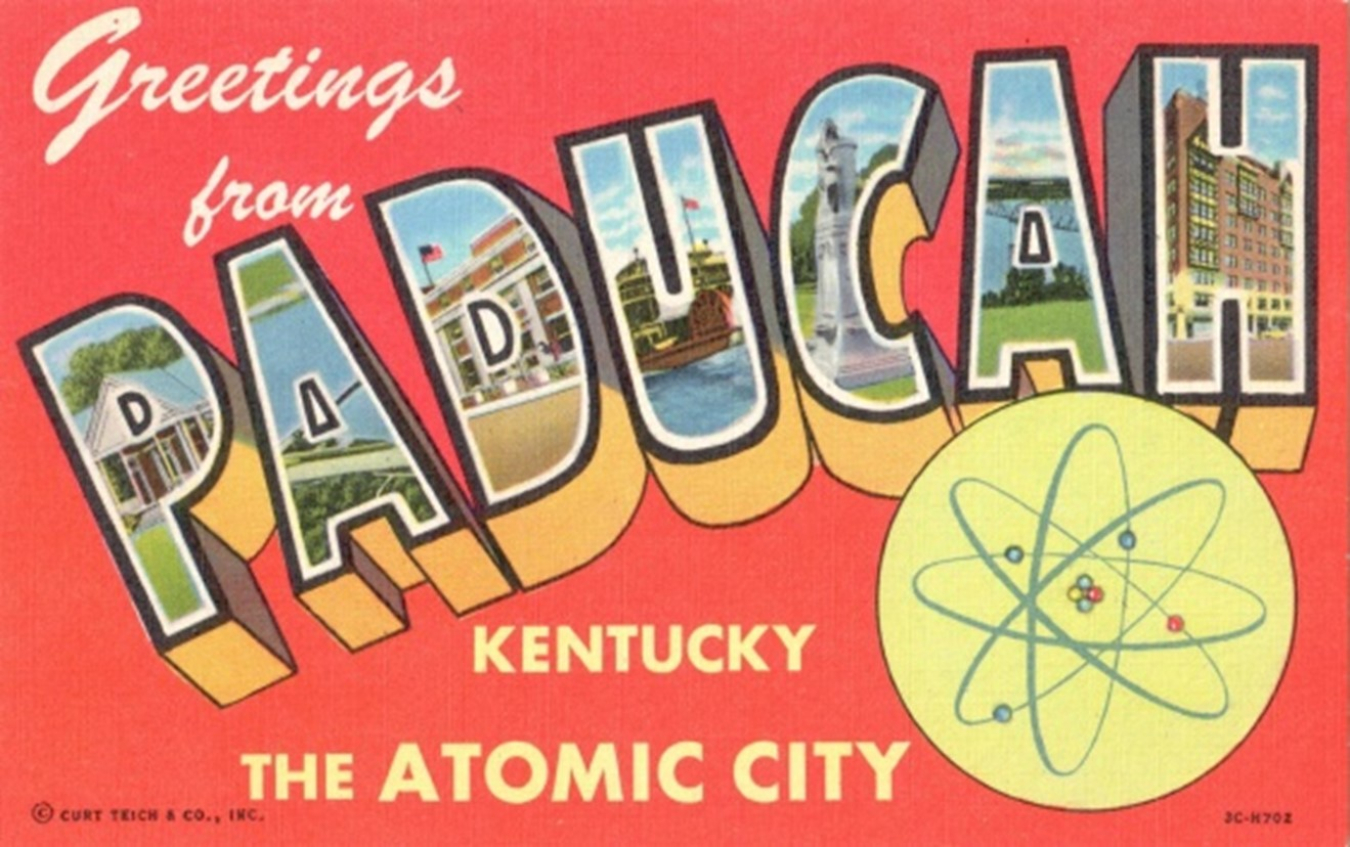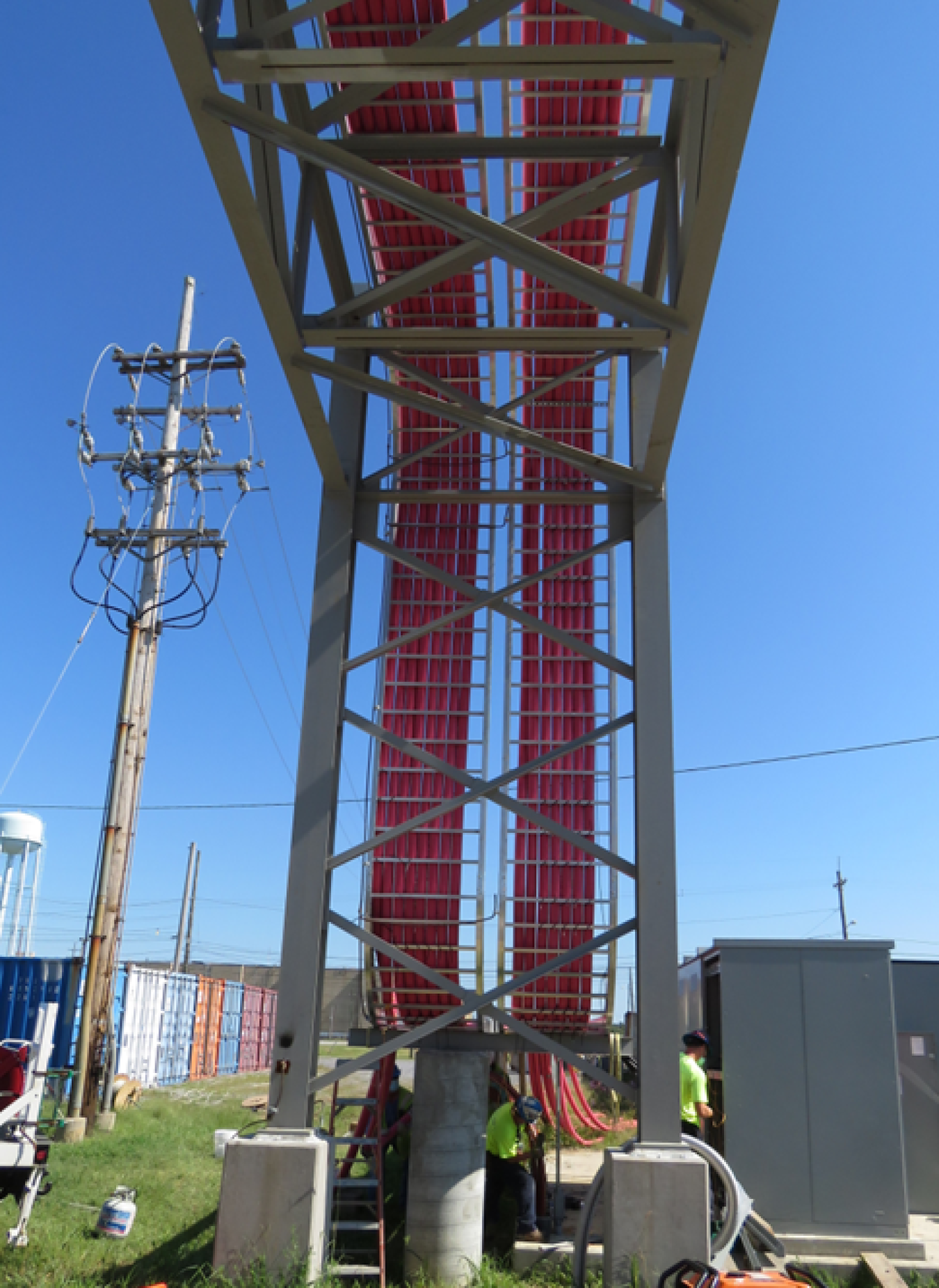
PADUCAH, Ky. – Roadways, railroads, water and sewage treatment facilities, a bank, a post office, a fire department, and security force — all of this made up EM’s Paducah Site more than 60 years ago.
During the Cold War, the Paducah Gaseous Diffusion Plant (PGDP) site was designed and built to function much like a small city, complete with its own infrastructure. With the Cold War ended, and the uranium-enrichment industry having moved away from gaseous diffusion to more efficient technologies, the site no longer needs the extensive infrastructure once required. Therefore, as EM advances cleanup of the western Kentucky site, it is working to reduce utility costs and energy consumption.
In the decades when PGDP was operational, Paducah maintained four electrical switchyards, which could support up to 3,000 megawatts of power per hour. This is enough energy to power a city as large as Nashville, Tennessee.

A postcard is shown from the uranium-enrichment era at Paducah, Kentucky. Although the postcard promoted the nearby City of Paducah, the Paducah Gaseous Diffusion Plant’s size and scope — akin to that of a small city — were commensurate with its impact on the region’s economy. The Paducah Site once used as much electricity as a city the size of Nashville, Tennessee.

Today, the site’s cleanup mission only uses about 12 megawatts per hour. This reduction in energy requirements provided an opportunity for EM to reduce energy costs and consumption by constructing a new electrical substation and power distribution system, operated by the Tennessee Valley Authority (TVA).
Earlier this year, EM safely took Paducah’s last remaining switchyard offline and transferred electrical loads to the new substation. In order to transfer power from the substation to the plant, EM’s infrastructure support services contractor, Swift & Staley, with its subcontractor Beltline Electric Company, constructed a new power distribution system to connect the new TVA substation into the existing plant feeder systems.
“I am proud of the work being done to reduce the amount of energy and other utilities we consume at the Paducah Site,” Portsmouth/Paducah Project Office Paducah Site Lead Jennifer Woodard said. “The energy savings we garner over the next several years will go a long way in advancing our cleanup mission at Paducah.”
To receive the latest news and updates about the Office of Environmental Management, submit your e-mail address.
